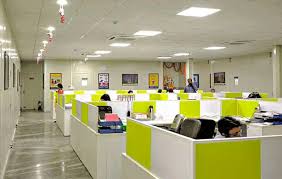In the modern professional landscape, where remote work and flexible schedules are becoming increasingly common, the traditional office space is undergoing a profound transformation. From startups to established corporations, businesses are recognizing the importance of creating innovative and inspiring work environments that foster productivity, creativity, and employee well-being. Whether you’re setting up a home office or revamping a corporate space, here are some creative office ideas to consider:
- Flexible Layouts: Break away from the rigid cubicle layout and embrace flexible workspaces that encourage collaboration and movement. Incorporate adjustable desks, movable partitions, and modular furniture to allow employees to customize their environment based on their tasks and preferences.
- Biophilic Design: Integrate elements of nature into the office environment to promote well-being and creativity. Incorporate plants, natural light, and sustainable materials to create a connection with the outdoors and reduce stress levels among employees.
- Activity-Based Zones: Designate different areas within the office for specific tasks and activities, such as quiet zones for focused work, collaboration areas for brainstorming sessions, and relaxation corners for breaks. This approach ensures that employees have access to the 오피뷰 right environment for the task at hand.
- Tech Integration: Embrace technology to streamline processes and enhance communication and collaboration. Invest in smart office solutions such as digital whiteboards, video conferencing tools, and productivity apps to facilitate remote work and seamless information sharing.
- Wellness Initiatives: Prioritize employee health and well-being by implementing wellness initiatives within the office. Provide standing desks, ergonomic chairs, and fitness amenities such as yoga studios or onsite gyms to encourage physical activity and reduce sedentary behavior.
- Creative Stimuli: Spark creativity and innovation by incorporating elements of art, color, and culture into the office environment. Displaying artwork, murals, and installations can inspire employees and stimulate new ideas, while also adding personality to the space.
- Quiet Spaces: Recognize the importance of quiet and solitude in a busy work environment by creating designated quiet spaces where employees can retreat for focused work or reflection. Consider implementing soundproofing solutions and acoustic design principles to minimize distractions and enhance concentration.
- Community Areas: Foster a sense of community and camaraderie among employees by creating social gathering spaces within the office. Designate areas for informal meetings, coffee breaks, and team-building activities to encourage interaction and collaboration outside of formal work settings.
- Personalization: Allow employees to personalize their workspace to reflect their individual preferences and personality. Encourage the display of personal items, artwork, and photos to create a sense of ownership and belonging.
- Sustainability Practices: Demonstrate a commitment to sustainability by incorporating eco-friendly design principles and practices into the office. Implement energy-efficient lighting, recycling programs, and sustainable materials to minimize environmental impact and promote corporate responsibility.
In conclusion, the design of the office space plays a crucial role in shaping the culture, productivity, and overall success of a business. By embracing innovative office ideas that prioritize flexibility, well-being, and creativity, organizations can create inspiring work environments that attract top talent, foster collaboration, and drive success in the digital age.









